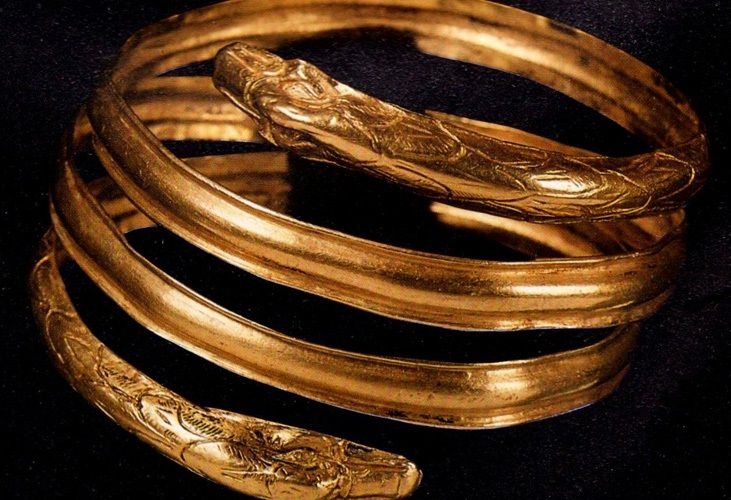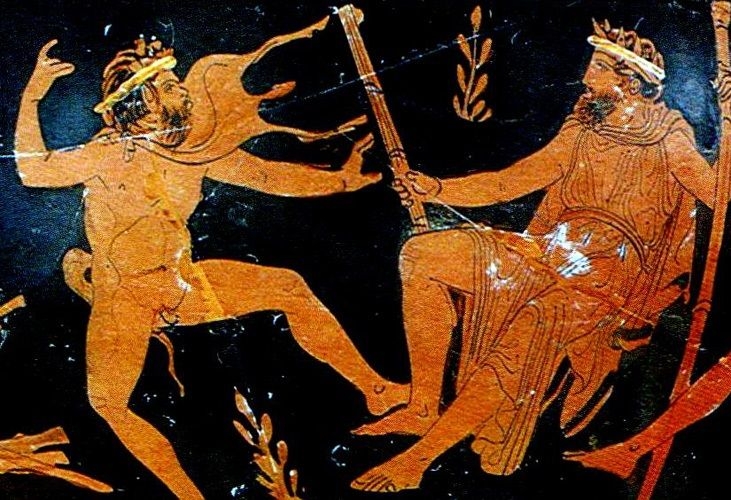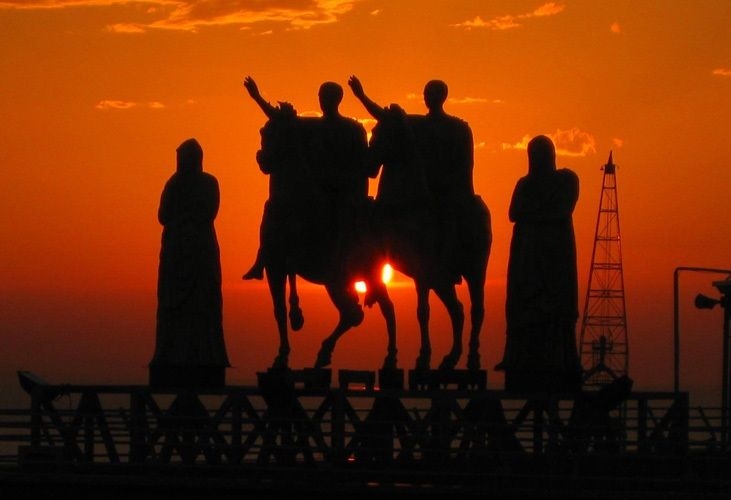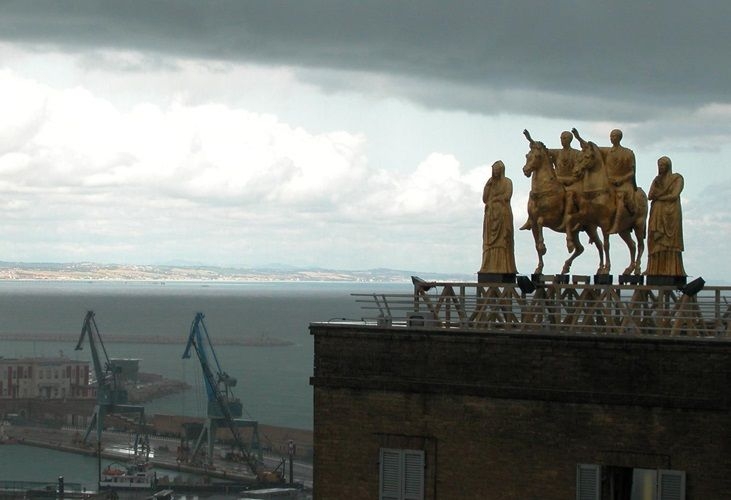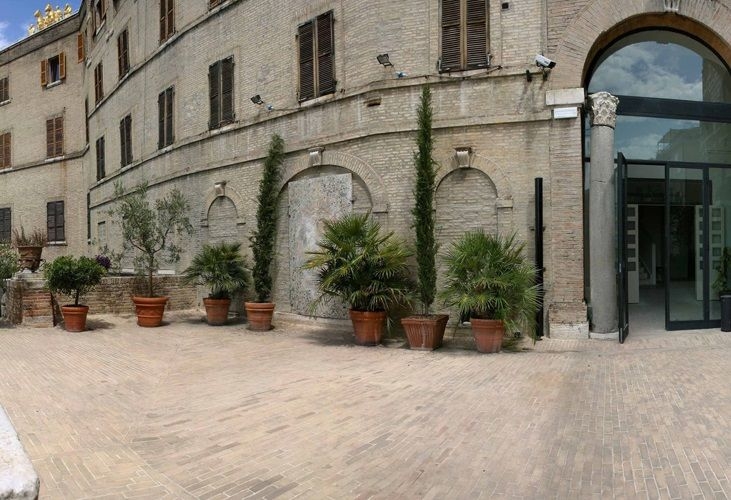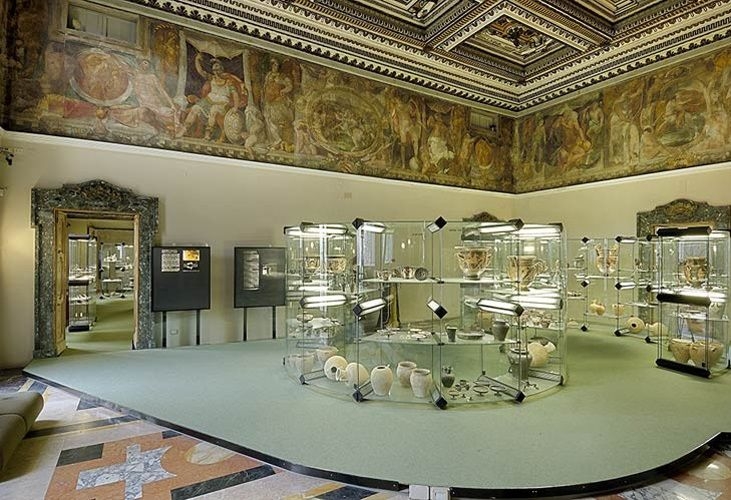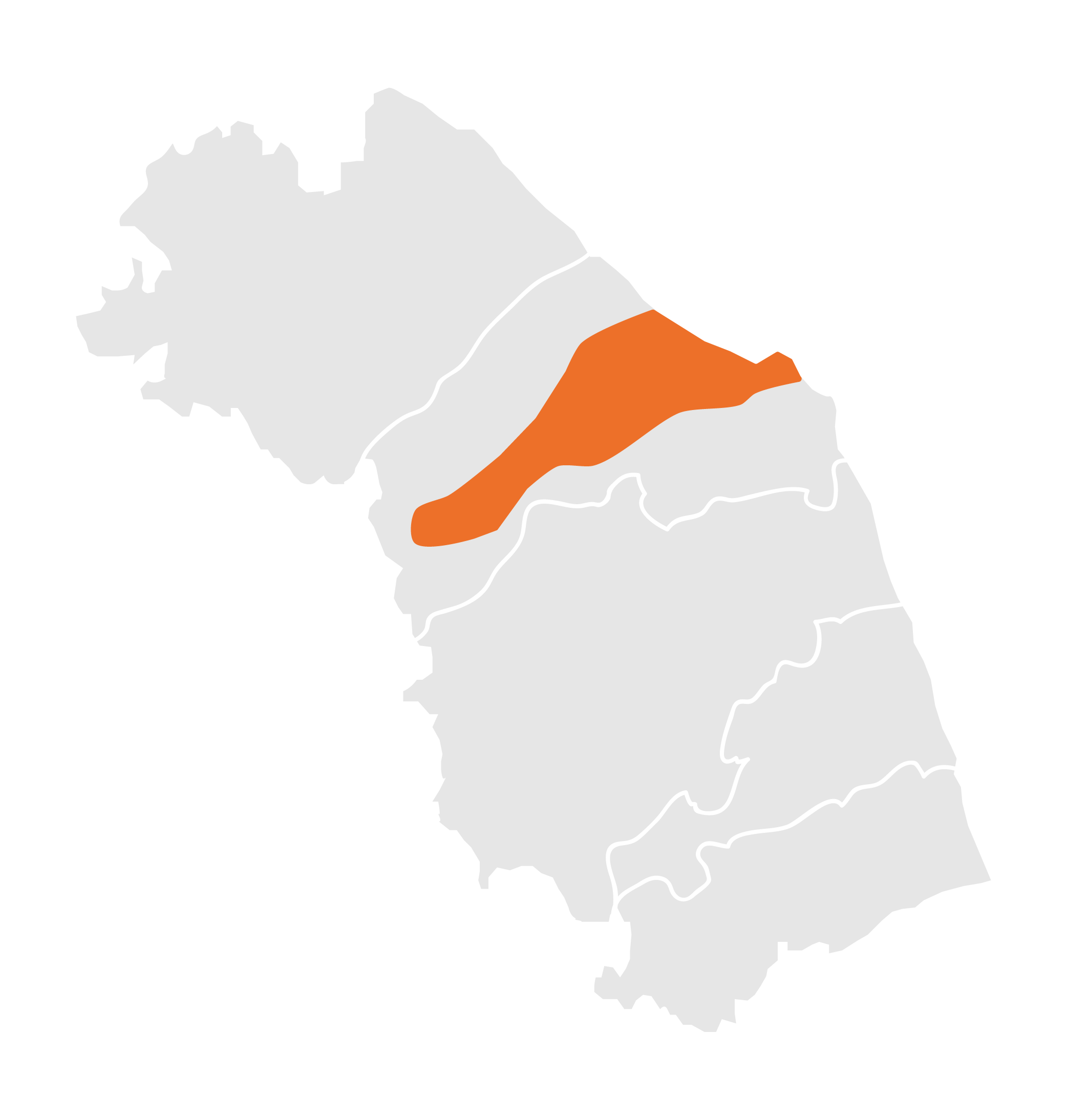
The National Archaeological Museum of the Marche, constituted following the approval of the Royal Decree of 1860 and inaugurated on October 9, 1927 under the direction of the Superintendent Giuseppe Moretti, was reopened in 1988 by the Superintendent and Director Dellia Lollini, whose task was to reassemble the Picene section. In the 1990s, the Prehistoric and Bronze Age sections were inaugurated, and in 2010 and 2015 the Hellenistic-Roman section dedicated to Ancona reopened, curated by Superintendent and Director Giuliano De Marinis with the assistance of current Director Nicoletta Frapiccini. The museum is located in the prestigious seat of the sixteenth century Palazzo Ferretti, residence of the noble Ferretti family of Ancona. The exterior of the palace is probably attributed to Antonio San Gallo the Younger, civil and military architect; the decoration of the noble floor was commissioned by Count Angelo di Girolamo Ferretti to the painter Pellegrino Tibaldi. In 1759 the building was restored, probably upon a project by Luigi Vanvitelli, with the enlargement of the facade, and the construction of the balcony, the central portal, the staircase of honor and the roof terrace. Over time, the palace has undergone several restoration efforts to repair damage inflicted, first by the airborne bombings of World War II, and then by the 1972 earthquake. The tour of the museum opens with the Prehistoric section, set up in the mezzanine, where, from a multimedia showcase, visitors are welcomed by the Venus of Frasassi, a precious find dating to between 25,000 and 28,000 years ago. The exhibits begin with the display of the countless lithic finds from Monte Conero, dating back 300,000 years; there follow the testimonies of the Neolithic settlement of Ripabianca in Monterado (6th millennium BC), and of Conelle di Arcevia (3rd millennium BC). The twenty-five bronze daggers of Ripatransone (1800-1600 BC), the Apennine and sub-Apennine ceramic tiles from the caverns of Frasassi Gorge (1,500-1,200 BC) and the finds of the proto-Villanovian necropolis of Pianelle di Genga (1,200-1,000 BC) are also visible. Proceeding to the third floor, one arrives at the Protohistory section, where finds from the Picene villages of the region can be admired: here are the remains of the "Villanovian" necropolis of Fermo (8th c. BC) and a selection of the most fascinating Picene grave goods (end 8th c. BC - beginning 6th c. BC). The next room is dedicated to steles and Picene writing. The exhibition continues on the first floor where the artifacts displayed date back to classical and late-classical times. Here, next to the grave goods of the rich Numana-Sirolo necropolis, with precious Attic ceramics and the luxurious Etruscan bronze vases, are displayed the rich grave goods of Santa Paolina di Filottrano, San Filippo di Osimo and Montefortino di Arcevia, with gold jewelry and Celtic weapons. The recently set up Roman section holds the frieze and pediment of Civitalba and the finds from the necropolis and town of Ancona (4th c. BC – 8th c. AD). The visitor has the opportunity to be assisted in his visit by multimedia devices, such as the Digital Library and the latest generation of multi-sensory devices. These instruments allow you to deepen your knowledge of the more notable finds of the museum collection through the magnification of the objects, 3D vision and other technologies that, by stimulating the sense of touch, allow one to “feel” the surface and weight of the objects being analyzed. All this makes the National Archaeological Museum of the Marche a state-of-the-art museum teaching facility.
We have found no place to eat in the vicinity
We have found no place to sleep in the vicinity
Da Pesaro a San Benedetto del Tronto, lungo la costa Adriatica, alla scoperta dei principali porti e approdi frequentati dall’età del bronzo a oggi. Alla foce di fiumi e torrenti, entro piccole baie, promontori e grandi insenature, si svilupparono nell’antichità porti, porti canale, empori o semplici approdi. Questi scali furono il fulcro di una fitta rete di commerci marittimi che hanno dato vita a un intenso dialogo tra oriente e occidente, testimoniato dai ritrovamenti di reperti provenienti da tutto il bacino del Mediterraneo.
Nelle zone di confine dell’entroterra marchigiano i principi umbri di Camerino vivevano a contatto con numerosi villaggi, anch’essi retti da principi guerrieri piceni. I pregevoli corredi delle necropoli, risalenti alla fine dell’VIII - inizi VI sec. a.C., documentano i fitti scambi con l’oriente greco e con l’Etruria e attestano il ruolo cruciale di queste popolazioni nei traffici mercantili tra Adriatico e Appennino, che essi controllavano e da cui traevano le loro ricchezze.

|
Address | Via Ferretti 6 Ancona |

|
Phone Number | 071202602 |

|
Opening Time | Martedi-Domenica: 8:30-19:30; |

|
Closure Day | Lunedì, 25 dicembre, 1 gennaio, 1 maggio |

|
Visit Time | 3 h |

|
Entrance Fee | Prima domenica del mese: Ingresso Libero; Ingresso intero: 5 euro; Ridotto: 2,50 euro; Ingresso Gratuiro: minori di 18 anni. |

|
Reservation Required | no |

|
Bookshop | yes |

|
Free Guided Tour | no |

|
Guided Tour | no |

|
Parking | Si, a pagamento |

|
Disabled Accessibility | yes |

|
Audioguide | no |

|
Didactic Rooms | yes |

|
Conference room | yes |

|
English language | yes |

|
Public Transport | yes |

|
Family Services | yes |
